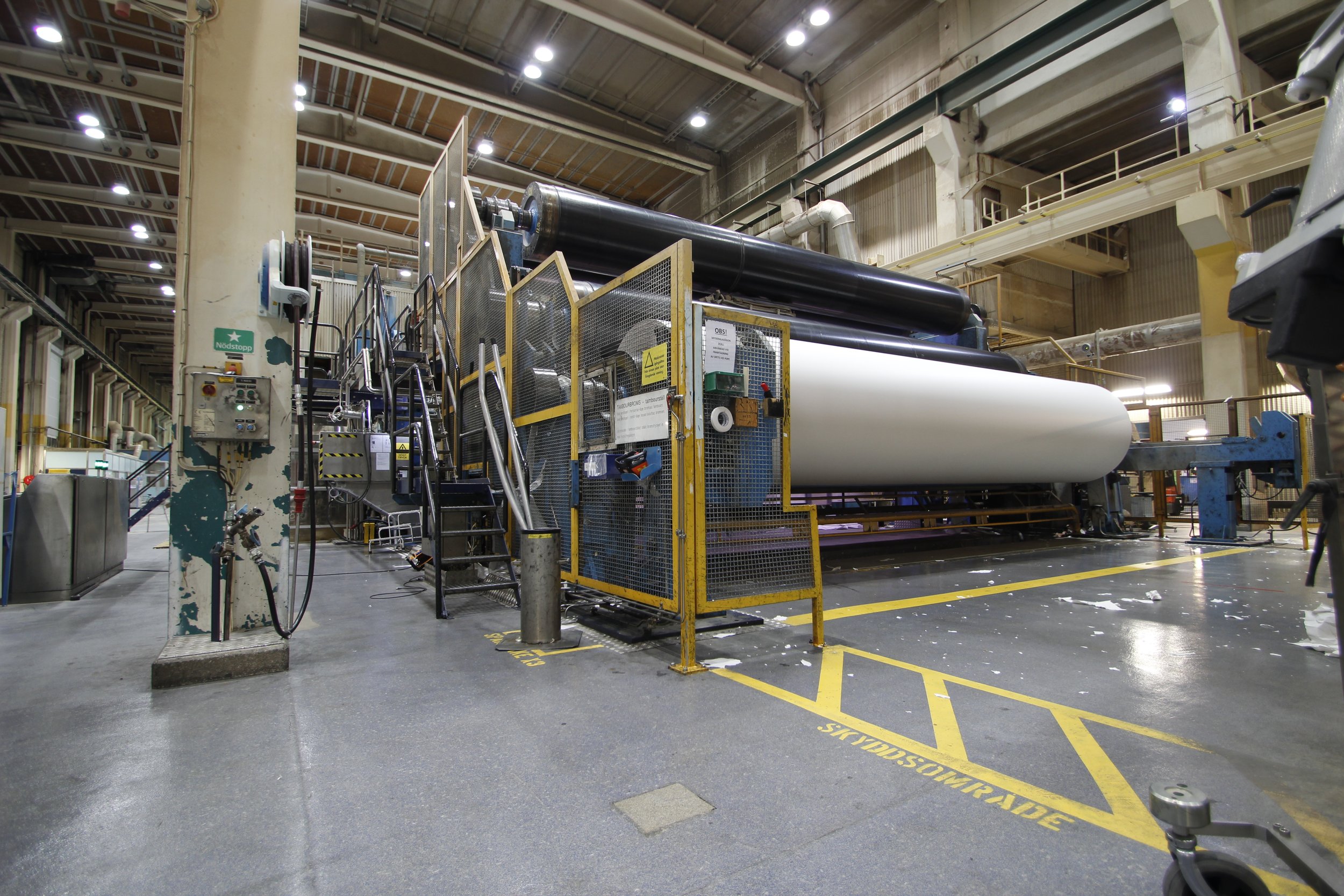Navigating the Paper Shortage
Work With Sounds/Wikimedia Commons
With many magazines facing delays with their printers these days, we connected with David Berkowitz, COO of Lane Press in Vermont, to tell us why we’re in this mess, when it might start to resolve, and what we can do in the meantime to stay on schedule. David knows paper having worked in the industry for close to 50 years as Chairman and CEO of Central Lewmar paper company and then President and CEO of Gould Paper Corp.
What’s the dang problem anyway?
Liner Board is the New Must-have: Over the last 15 years, there's been a secular decline in paper production, certainly in the United States, as consumers have moved to eBooks and digital content. As a result, many paper mills have repurposed machines from making publishing and writing grade paper to liner board and packaging grades. COVID—and the demand for shipping cartons and liner board as people stayed home and shopped online—exacerbated the issue.
The Old Safety: As COVID has abated and publishing efforts have resumed, demand for publishing grade paper has increased. However, in part due to the repurposing of paper machines, there isn’t enough domestic capacity to meet this increased demand. There has always been a safety valve to domestic paper shortages. Historically, there has been a fair amount of paper imported into the United States from Scandinavia, Western/Eastern Europe, the Middle East, South America, and Asia. Today, that safety valve isn’t working because of port congestion, lack of truck drivers, cost of containers, and cost of shipping. Domestic mills just can't keep up with the demand that foreign mills were able to alleviate in the past.
Hitting the COVID Brakes. The immediate reaction to COVID was for magazine staffs at colleges and universities across the country to hit the brakes on print in an effort to push more timely news out via digital channels and save their institutions some money. When COVID began to even out, a lot of those colleges put pedal to the metal: “There's a lot of pent-up demand right now that people want to get their message out in what they feel is the most effective way to do it, and that's through print,” says Berkowitz. So we’re all trying to get on press right now.
Total Freight Show: Freight costs are elevated because trucks and drivers are in short supply and fuel prices are high. Currently, freight can cost as much as double to ship from a paper mill to a printer far away. As a result, mills are focusing on shipping to customers within a favorable freight zone. And printers are trying to source paper nearby as one way of controlling costs for their customers. This further constrains an already challenging paper purchasing market.
When will the paper shortage end?
An Eye on the Horizon: “I think the first thing that’s going to change the dynamic is going to be the ability to get paper into the United States from Europe, Scandinavia, South America, and Asia, and that's going to begin to relieve the problem,” says Berkowitz. “I think that's the first sign of an easing up relative to the availability of paper.”
What can you do about it now?
CONSIDER THESE STEPS:
Plan Ahead: The sooner printers have info about your particular year ahead (number of issues, page count, timing) the better they can build your needs into their paper-purchasing plans. In this particularly difficult paper market, printers are challenged to secure enough paper for the jobs that are on their radar, so you can imagine how hard it is to get paper for jobs that aren't on their radar and want to come in on short notice.
Get Files In Early or On Time: If your files are in place and ready, your printer may be able slip your magazine in should another magazine be delayed.
Be Flexible: Printers may not have your paper on the floor, but it’s possible they have something similar. If you’re willing to try something new, you may get a better position in line. Your printer may also ask you if your schedule is flexible. If it is, they can move you out, and that can help with the big picture. (Pro tip: It also gives you karma points.)
Budget Accordingly: “There's been about eight price increases since January last year,” says Berkowitz. It’s simple supply and demand, and until this irons out, it is our current reality. “Paper pricing has gone up over the last 12 months by about 45 percent. It's unprecedented,” says Berkowitz. “If somebody were to ask me to put a budget in for next year, I have no definitive answer—but increases could go as high as 25 percent or more.”
Stay Up to Date: Lane offers a monthly newsletter that often contains industry news—such as this supply chain madness—postal rate news, and more. You can sign up for their newsletter at https://lanepress.com/enews-signup/.
It’s a lot for a comms staff to deal with, especially when you throw in increasing costs all the way around—from paper to postage. We would love to hear how you’re saving money while continuing to produce a quality publication. Share tips with the Dog Ear community by emailing info@dogearconsultants.com. We would love to hear from you.

